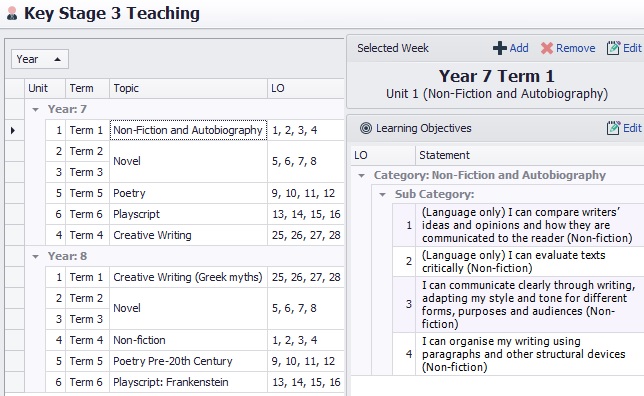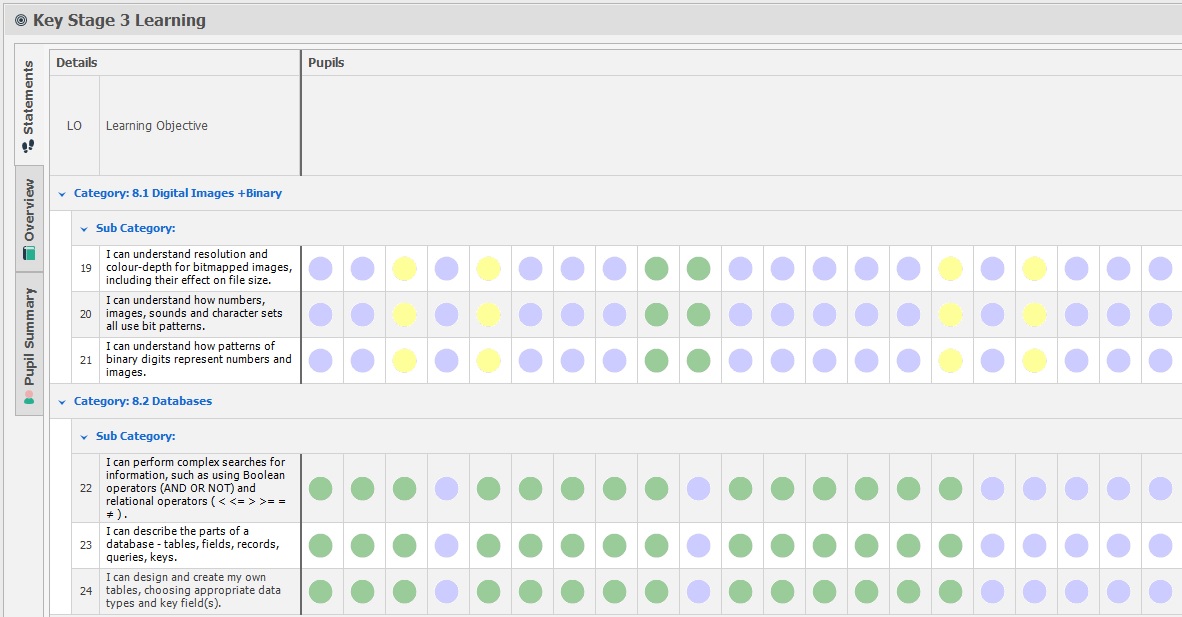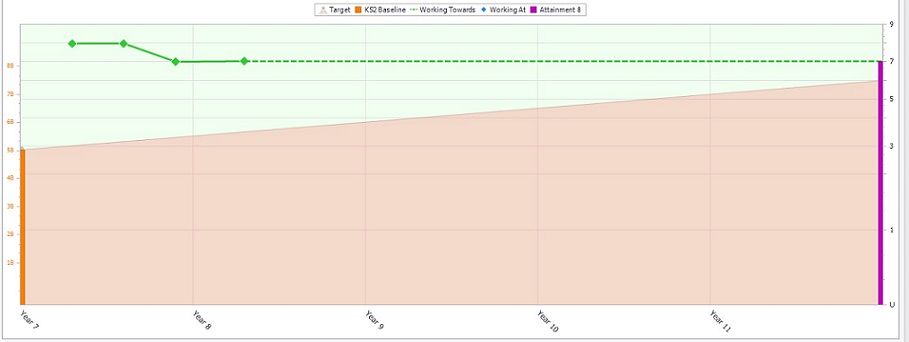 School Data Manager
School Data Manager
 School Data Manager
School Data Manager
The School
Stonehenge School is an 11-16 secondary school in Amesbury, Wiltshire. The school has a large number of pupils from service families (32%). NOR is currently 694, though this is due to expand to 1150 by 2022 because of significant house building in the area to accommodate service family re-settling, and as part of Wiltshire's Core Strategy to build more houses in general. As part of this the school will be expanded, ready for 2019. Cohorts are usually Sig- in terms of prior attainment at KS2. The school has been rated as Good in its last five Ofsted inspections.
Students select their options during Year 8 so that courses are begun at the start of Year 9, though they do not necessarily start GCSE content at this point.
The Existing System
In autumn 2015 the school moved to using summative Predicted (Working Towards) GCSE grades for KS3 as a replacement for National Curriculum levels.
The main issues with this system for reporting, tracking and analysis were:
In January 2017 the school held internal interviews for a new associate member of SLT, as part of which candidates had to identify an area for improvement and offer solutions. Independently of each other all candidates chose KS3 assessment. As a result SLT chose to form an implementation group to redesign and implement a new KS3 assessment system. This group consisted of the four candidates, the Deputy Headteacher and the Data Manager.
The Approach
The implementation group first met in early 2017 to consider the overall approach.
The first step was to gauge the opinions and thoughts of teaching staff. To this end in February 2017 a questionnaire was sent to all staff to gauge opinions and thoughts on how we reported at KS3.
Analysing the results of the questionnaire, it was clear that the issues that were identified with the output were due to a lack of consistency in assessment. Also,
The group met again in March 2017 to consider what the new system should do.
There was broad agreement that the school would use a Mastery approach based on formative assessment as detailed in the Commission on Assessment Without Levels report (AwL Commission Report).
4Matrix had been used in the school for analysis since August 2014 and the group were aware that it incorporated an AwL recording system based on the commission’s report. The group looked at the Avoiding the 10 Pitfalls document that underpinned the system and agreed these were sound principles to use a basis.
The AwL system works as follows:
The Principles – “I Can” statements
It was agreed that the school would aim to implement the new system for September 2017.
4Matrix has a high degree of flexibility in terms of how AwL can be set up. The members of the group decided how to apply that system in Stonehenge and then trialled the new system in their own subjects and classes first. This trial was run in Term 4 of 2016/17.
As a result of this the following principles were agreed:
Roll Out
The next stage was to show the system to heads of departments and ask them to produce the I Can statements for their department. The school has monthly middle manager meetings and the new system was showcased at the June 2017 meeting. To aid understanding an FAQ sheet was produced. The new system was received very positively by heads of departments.
It was anticipated that there would be questions about extra workload. Therefore it was emphasised that as most of this work would be taking place anyway the purpose of the system was simply to formalise it across departments. Nevertheless, to help with engagement of staff it was decided to reduce the number of reporting periods in KS4 from five or six per academic year to three.
The I Can statements were produced by the end of the academic year. They were moderated by the implementation team to ensure consistency and subsequently passed to the Data Manager for input into 4Matrix. Heads of departments were also asked to discuss and outline the system with their staff before the end of the academic year. Heads of department were also encouraged to provide their schemes of work, as these could also be entered into 4Matrix to assist with the entry of mastery grades.

The first day back of 2017/18 was a teacher training day during which the system was outlined again and data entry into 4Matrix was demonstrated. A guidance sheet was provided outlining how to enter data.
First Term and Reporting
Staff began to enter mastery grades into 4Matrix in Terms 1 & 2 (The Autumn Term) of 2017/18. Heads of departments monitored the grades, both in terms of quantity and quality.

In December the grades were “captured” in 4Matrix.
Summative grades for each subject are derived from the mastery grades. These are not reported to parents and pupils and are used for internal tracking only. Each mastery grade has an underlying 9-1 value (Mastered=9, Secure=7, Developing=5, Emerging=3). For each subject the value of mastery grades assessed to that point are averaged.
Summative targets are not set for pupils. Targets are set in year 9 using FFT20 as a guide though subject staff are encouraged to move the targets up or down as appropriate for each pupil.
Both of these figures are imported into 4Matrix for monitoring purposes. An example of the output would be the Flight Path.

For termly summary pupil reports (example) the number of each mastery grades for each subject is recorded for every pupil.
Review
The implementation team met in January 2018 to review the first data entry and collection in the Autumn Term.
Positives identified were:
Areas for development were:
We also looked at what we reported to parents and pupils and examined different options.
Next Steps